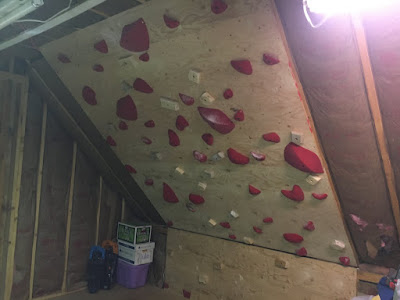Strength to weight ratio is said to be the number one important thing in climbing.
A big problem... maybe you've heard... all competition climbers have eating disorders. Or maybe it's that they will have in 5 years. Or maybe it's that skeletons have risen from the dead and are eating all the world cup medals. We need a system in place to discourage eating disorders, particularly for young people.
One suggestion is for climbers to have a minimum BMI in order to compete. This is supposedly fraught with legal issues. But maybe it would work similarly to boxing, with different weight categories?
Regardless:
BMI is the ratio of height to weight... So let's imagine a young person (using he/him pronouns) is looking to make it to the top by any means. He needs to have the acceptable BMI but also wants to be as light as possible. He therefore reasons he needs to be as short as possible. The best way to be as short as possible is under eating during childhood, so he potentially got eating disorders even earlier. The BMI rule may actually create more problems, looked at in this way.
Here is an alternative... Route Setters: make routes more reachy.
That same young climber now has to think... "ok i gotta be 5'10 at least to have a chance... I gotta eat enough to get my height up..."
Arguments against the idea:
1. Once a climber has grown to the desired height, they maybe will develop eating disorders.
This is a hypothetical... the intention is that if climbers can get through their teens... they hopefully be well placed for life (citation needed). Eating disorders are best thought of as a mental illness. So if the situation were to arise... we have a well built 20 year old with a mental illness, rather than a 12 year old with rickets. Neither is ideal obviously.
2. Genetics plays an important role in how tall someone grows.
Not as much as a full power diet (citation needed).
3. It's not fair on short people.
It's a common misconception that being tall is an advantage. Almost all the top male climbers today are not tall. Sharma is 6'0, Ondra is 6'1 (mostly neck tho), Jacob Schubert is 5'9, Ghisolfi 5'7... Point I'm making is: if you set routes that aren't reachy, then short climbers have a huge advantage, just by being lighter. It's common to hear Matt Groom sympathizing with athletes who "can't reach." Well, they weigh under 100lbs... That's not fair either.
4. Not all short people had eating disorders when they were younger.
Each sport has an optimal body type. What makes climbing unique is we can tune the optimum by our route setting. Let's set routes that dissuade under eating by making them reeeeachy!
5. There maybe legal issues!
If a route setter reads this blog, and elects to make moves a little more reachy... no official policy needed...







